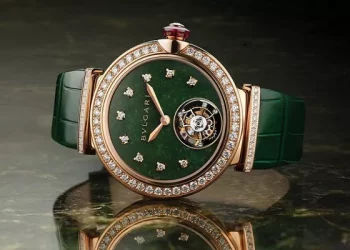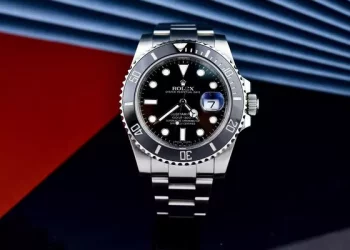The tourbillon movement is a complex and fascinating mechanism that has been an important part of watchmaking history for more than two centuries. It is one of the most impressive and sought-after features of high-end mechanical watches, and is considered to be a true mark of prestige and craftsmanship.
What is a tourbillon movement?
The tourbillon movement is a complex mechanical mechanism that is designed to improve the accuracy of a watch by compensating for the effects of gravity. It was invented in the late 18th century by Abraham-Louis Breguet, a Swiss watchmaker who is considered to be one of the most important figures in the history of horology.
The term “tourbillon” is derived from the French word for “whirlwind”, and it refers to the movement of the mechanism as it rotates on its axis. The tourbillon consists of a rotating cage that holds the watch’s escapement and balance wheel, which are the components responsible for regulating the watch’s timekeeping. The cage rotates once per minute, which means that the escapement and balance wheel are constantly moving in different positions, thereby compensating for the effects of gravity.
How does a tourbillon movement work?
The tourbillon movement is a highly complex mechanism that involves a number of intricate components. At the heart of the mechanism is the balance wheel, which is a weighted wheel that oscillates back and forth at a constant rate. The balance wheel is connected to the escapement, which is the mechanism that transfers energy from the watch’s mainspring to the balance wheel, allowing it to oscillate.
The tourbillon mechanism is designed to counteract the effects of gravity on the balance wheel, which can cause it to oscillate at different rates depending on its position. To do this, the escapement and balance wheel are mounted in a rotating cage that makes a full rotation once per minute. As the cage rotates, the escapement and balance wheel move through different positions, which helps to even out any variations in timekeeping that might be caused by changes in position or gravitational forces.
Why is the tourbillon movement so highly regarded?
The tourbillon movement is highly regarded in the world of watchmaking for a number of reasons. Firstly, it is a highly complex and intricate mechanism that requires a great deal of skill and expertise to design and build. This means that watches with tourbillon movements are usually produced in limited numbers, and are therefore highly sought-after by collectors.
In addition to their rarity, watches with tourbillon movements are also highly accurate and precise. By compensating for the effects of gravity, the tourbillon helps to ensure that the watch keeps accurate time regardless of its position. This is particularly important for watches that are designed for use in high-stress environments, such as aviation or deep-sea diving, where accuracy is of the utmost importance.
Finally, the tourbillon movement is also highly regarded for its aesthetic appeal. The rotating cage is an impressive and fascinating sight to behold, and is often visible through the watch’s caseback. The complexity and intricacy of the mechanism is a testament to the skill and craftsmanship of the watchmaker, and is a source of pride for owners of tourbillon watches.
In conclusion, the tourbillon movement is a fascinating and complex mechanism that has been an important part of watchmaking history for more than two centuries. It is a testament to the skill and craftsmanship of the watchmaker, and is highly sought-after by collectors and enthusiasts alike. Whether you are a fan of mechanical watches, or simply appreciate the beauty and intricacy of fine craftsmanship, the tourbillon movement is truly a marvel of horology.












































